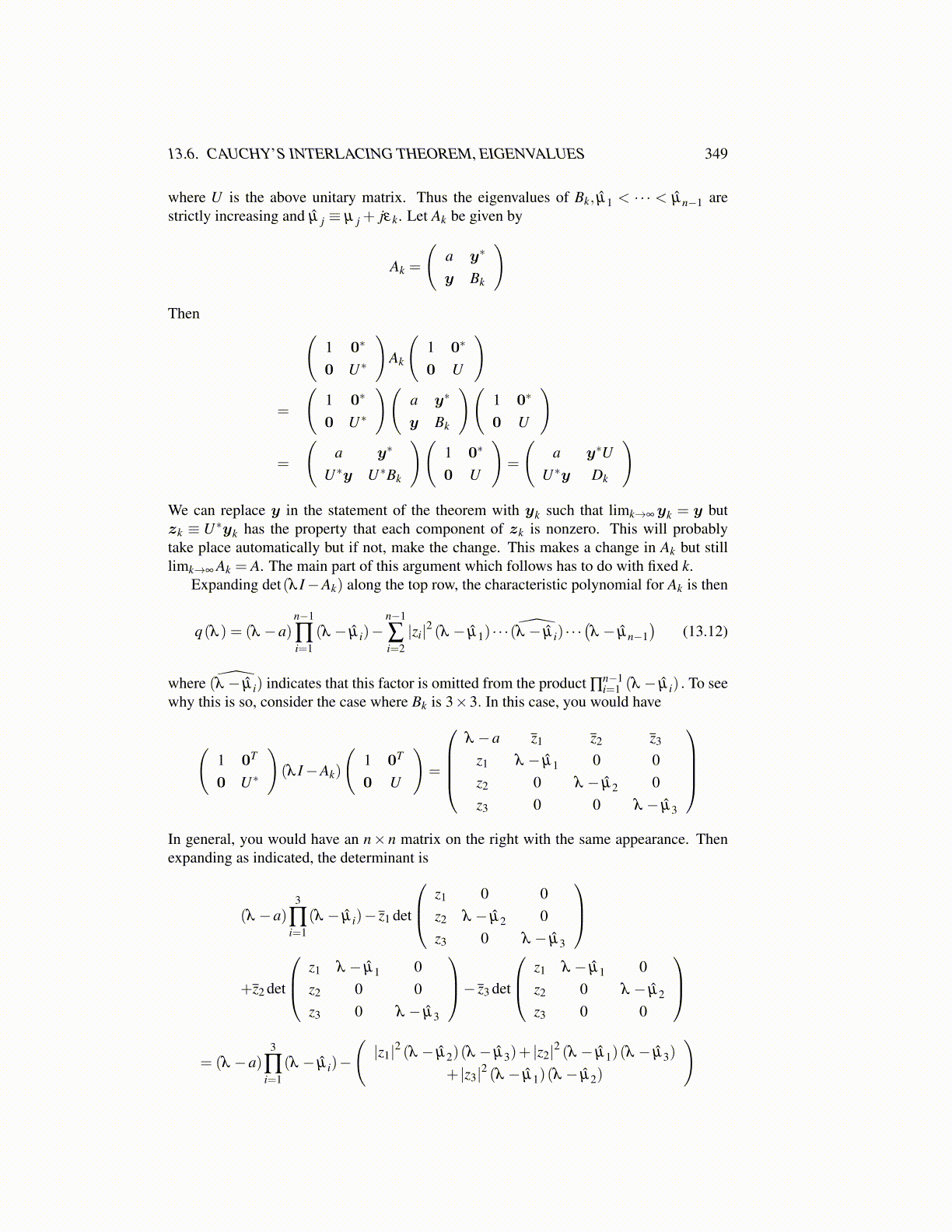
13.6. CAUCHY’S INTERLACING THEOREM, EIGENVALUES 349
where U is the above unitary matrix. Thus the eigenvalues of Bk, µ̂1 < · · · < µ̂n−1 arestrictly increasing and µ̂ j ≡ µ j + jεk. Let Ak be given by
Ak =
(a y∗
y Bk
)
Then (1 0∗
0 U∗
)Ak
(1 0∗
0 U
)
=
(1 0∗
0 U∗
)(a y∗
y Bk
)(1 0∗
0 U
)
=
(a y∗
U∗y U∗Bk
)(1 0∗
0 U
)=
(a y∗U
U∗y Dk
)
We can replace y in the statement of the theorem with yk such that limk→∞yk = y butzk ≡ U∗yk has the property that each component of zk is nonzero. This will probablytake place automatically but if not, make the change. This makes a change in Ak but stilllimk→∞ Ak = A. The main part of this argument which follows has to do with fixed k.
Expanding det(λ I−Ak) along the top row, the characteristic polynomial for Ak is then
q(λ ) = (λ −a)n−1
∏i=1
(λ − µ̂ i)−n−1
∑i=2|zi|2 (λ − µ̂1) · · · ̂(λ − µ̂ i) · · ·
(λ − µ̂n−1
)(13.12)
where ̂(λ − µ̂ i) indicates that this factor is omitted from the product ∏n−1i=1 (λ − µ̂ i) . To see
why this is so, consider the case where Bk is 3×3. In this case, you would have
(1 0T
0 U∗
)(λ I−Ak)
(1 0T
0 U
)=
λ −a z1 z2 z3
z1 λ − µ̂1 0 0z2 0 λ − µ̂2 0z3 0 0 λ − µ̂3
In general, you would have an n× n matrix on the right with the same appearance. Thenexpanding as indicated, the determinant is
(λ −a)3
∏i=1
(λ − µ̂ i)− z1 det
z1 0 0z2 λ − µ̂2 0z3 0 λ − µ̂3
+z2 det
z1 λ − µ̂1 0z2 0 0z3 0 λ − µ̂3
− z3 det
z1 λ − µ̂1 0z2 0 λ − µ̂2
z3 0 0
= (λ −a)3
∏i=1
(λ − µ̂ i)−
(|z1|2 (λ − µ̂2)(λ − µ̂3)+ |z2|2 (λ − µ̂1)(λ − µ̂3)
+ |z3|2 (λ − µ̂1)(λ − µ̂2)
)